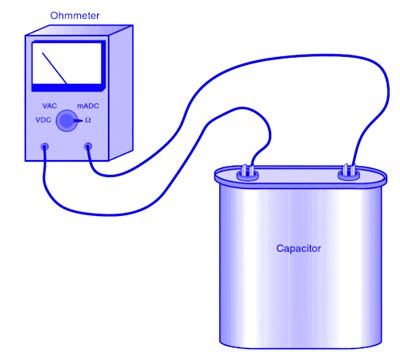When a 10 µF capacitor is connected across the terminals of an ohmmeter, the instrument initially shows low resistance and then slowly the value of resistance rises to a very high value.
When a 10 µF capacitor is connected across the terminals of an ohmmeter, the instrument initially shows low resistance and then slowly the value of resistance rises to a very high value. What conclusion can be drawn about the condition of the capacitor?
Right Answer is:
The capacitor is straight
SOLUTION
Testing of Capacitor
To really test a capacitor, two conditions must be assessed.
- One is the condition of the dielectric, and the other is the condition of the plate area.
- The first test can be made with an ohmmeter.
- If an ohmmeter is connected across the terminals of a capacitor, the meter should show a deflection upscale and then return to infinity ohms.
- The deflection upscale indicates current flow to the capacitor when it is being charged by the ohmmeter battery.
- If the leads of the ohmmeter are reversed, the meter should deflect twice as far upscale and then return to infinity occurs.
- If a digital ohmmeter is employed, it should indicate either infinity or very high resistance in the megohm range. That indicates that the capacitor is straight and is working fine.

- The ohmmeter test for a capacitor is actually a very poor test.
- This test will not indicate a broken plate that would lower the value of capacitance.
- The ohmmeter test can indicate a show circuit, but it cannot test the condition of the dielectric.
- To test the dielectric rated voltage must be applied to the capacitor.
